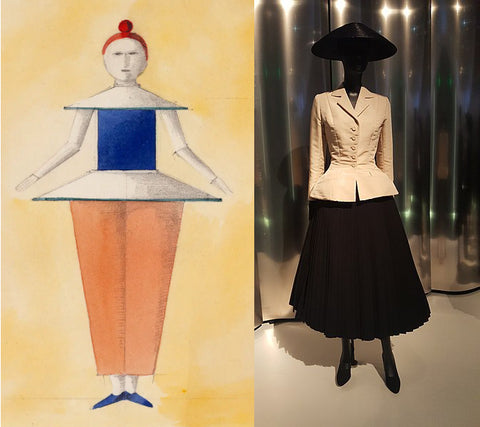Why does fashion utter clothing so abundantly?
Roland Barthes, The System of Fashion
By zealously applying structural methods on a little researched area of fashion, semiotician Barthes noted that clothing has an abundance of meanings. Why the communication of clothing is so intense and more visible than the function?
The primary function of clothing is rather straightforward, i.e. to protect the body from the elements. For the purpose of fulfilling this function, the quality of fabric and construction (cutting) are important. Clothes are worn on the body, therefore they are hardly separable from the wearer and it is the wearer who decides what other functions, apart from the primary, clothing is to perform. In most cases clothing has to reflect the real or imagined personality of the wearer, and they are used as amplifiers or attenuators of certain personal or bodily features of the wearer. Garments may convey information about gender, season, period, time of the day, wearer’s wealth, views, education, political preferences and other messages.
Even if we choose only 4 of these features, e.g. gender, season, period and wealth, we get 15 different combinations provided that at least one message is selected to be conveyed. Communicative messages of clothing are so abundant, that they overshadow the garment construction and leave it hardly noticeable. We change construction of a chair to reinvent a new way of comfortable sitting, but we mostly create clothes to reinvent a new message to be conveyed.
There are exceptions, though. Strict dress code suits and uniforms limit the amount of personalized messages in the garment. Only a skilled eye can distinguish a master cut men’s suit from a less exquisite one, even if they are similar in terms of communication and style. Only a skilled eye can notice design features that distinguish a well made suit from a poorly made one, as the cutting and construction of canonical clothing, such as men’s suits, function as a sign of social standing and quality, while external communication messages are deliberately restricted.
Creation of clothing has gradually turned into the creation of fashion, and now it is even referred to as the fashion design. Even the Bauhaus movement, the simplified and functional traces of which can be found nearly everyday in our environment, didn’t leave noticable traces in creation of clothing. Constructivism has taken strong roots in architecture and industrial design, but its application in creation of clothing is more complicated as there are certain peculiarities to be factored in; e.g. changes in clothes during movement, physique and geometrically imperfect organic shape of the body. The most simple and impractical expression of constructivism is to dress the body with geometric shapes, like the stage costumes of the Triadisches Ballet (The Triadic Ballet), which look more like moving sculptures rather than costumes. In this example, the kinetic function of geometric forms prevails over the comfort of wearing the costumes.

Fragment of O. Schlemmer sketch for Triadisches ballet and the Bar costume by Dior. Image source: fragment of O. Schlemmer sketch for Triadisches ballet, and a photo of Dior costume from Wikimedia Commons.
Yet there are other examples, too. Christian Dior was not a part of the Bauhaus movement, but in 1947 he designed the Bar Suit, a garment where there was no front or back, and the shape of a female body was interpreted geometrically. Like a sculpture, the Bar Suit looks good from all angles, and the silhouette seems to be shaped with a lathe. Perhaps, wearing it was just a little less uncomfortable than the Triadisches Ballet costumes, yet it was designed for the purpose of wearing.
Although Dior strived to break the boring patterns of canonical suits, the structure of his garments is not overshadowed by communicative messages. Dior managed to achieve a rare harmony between construction and appearance, thus proving it possible to create non-canonical clothes where appearance is based on construction.


